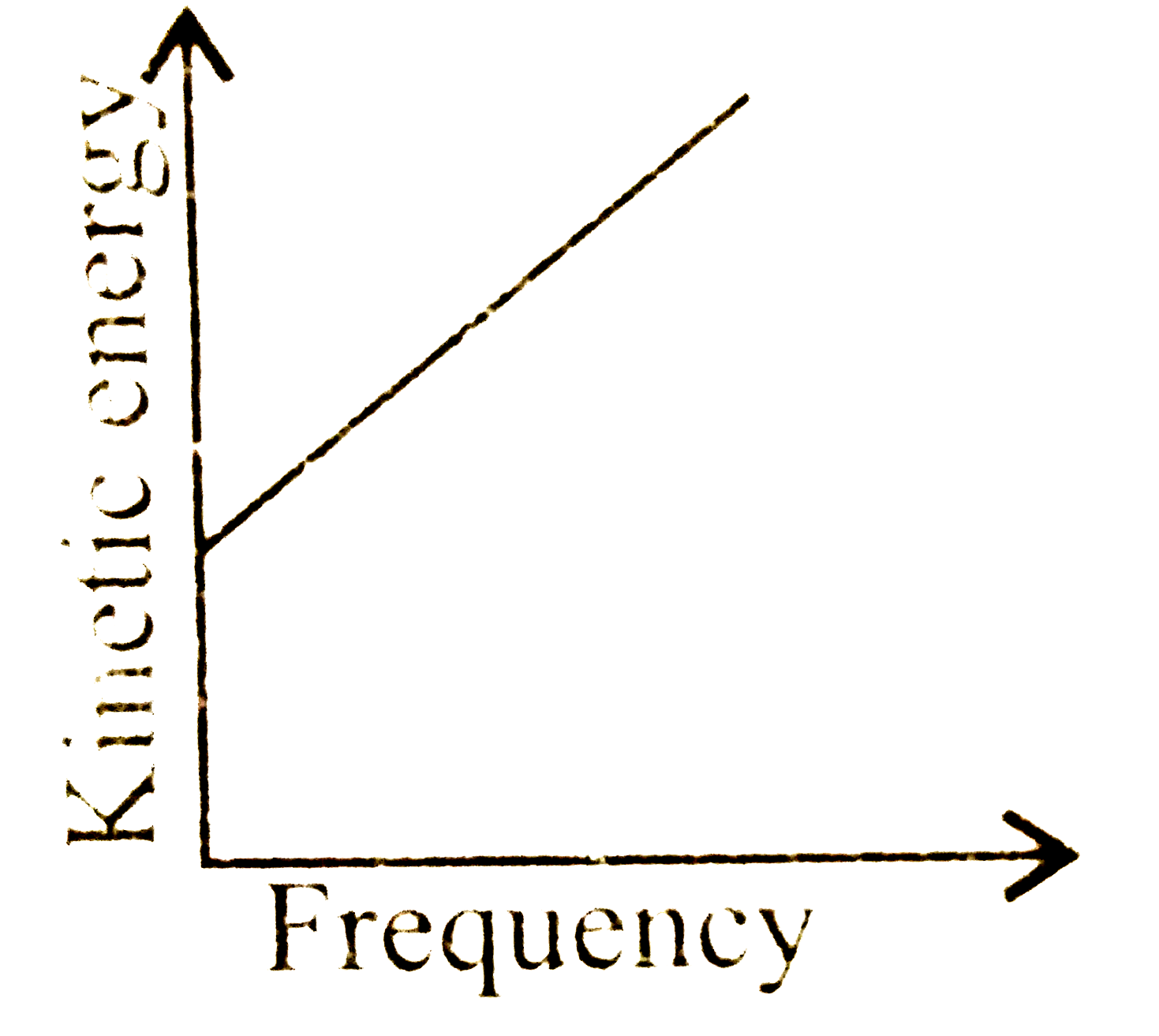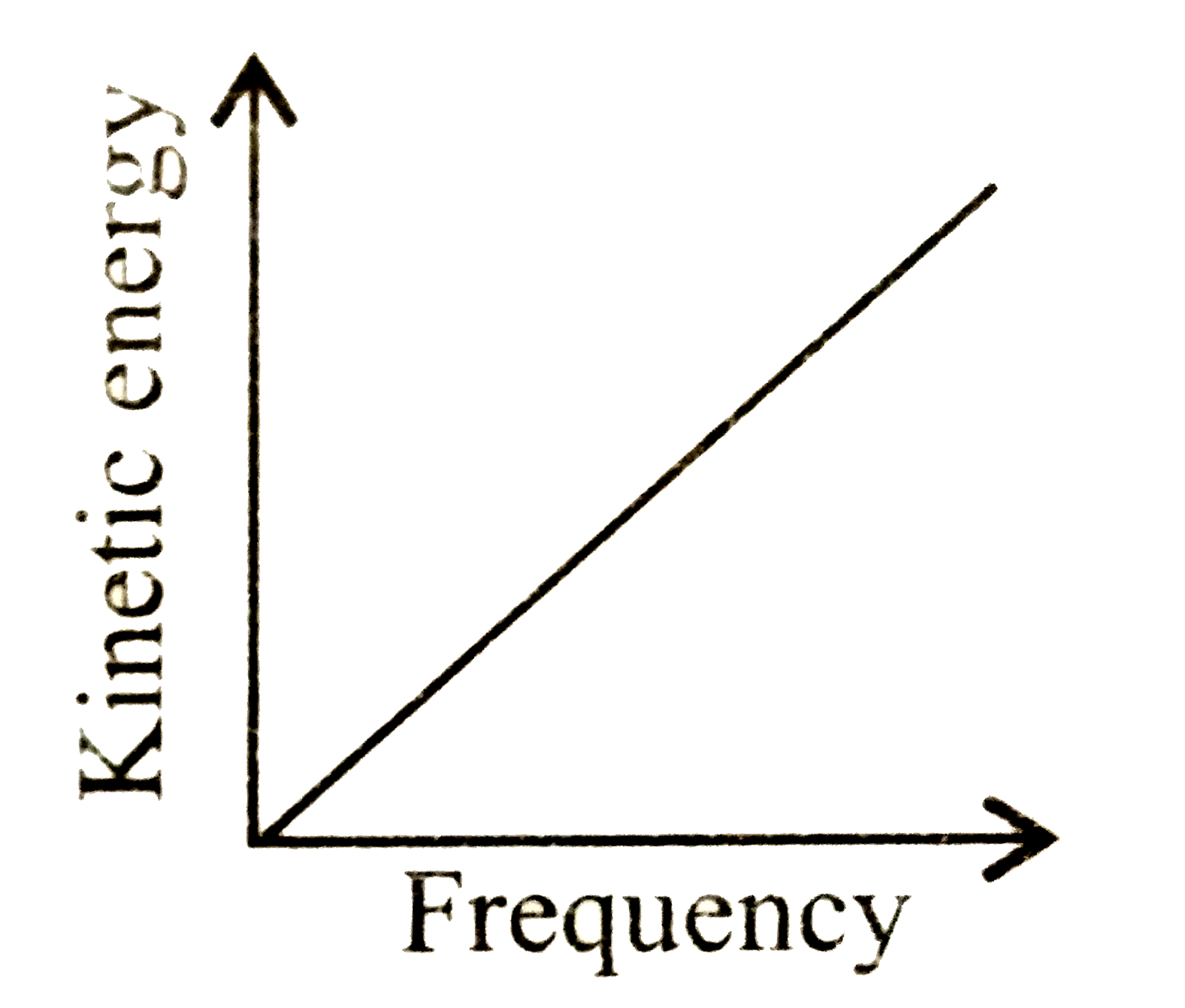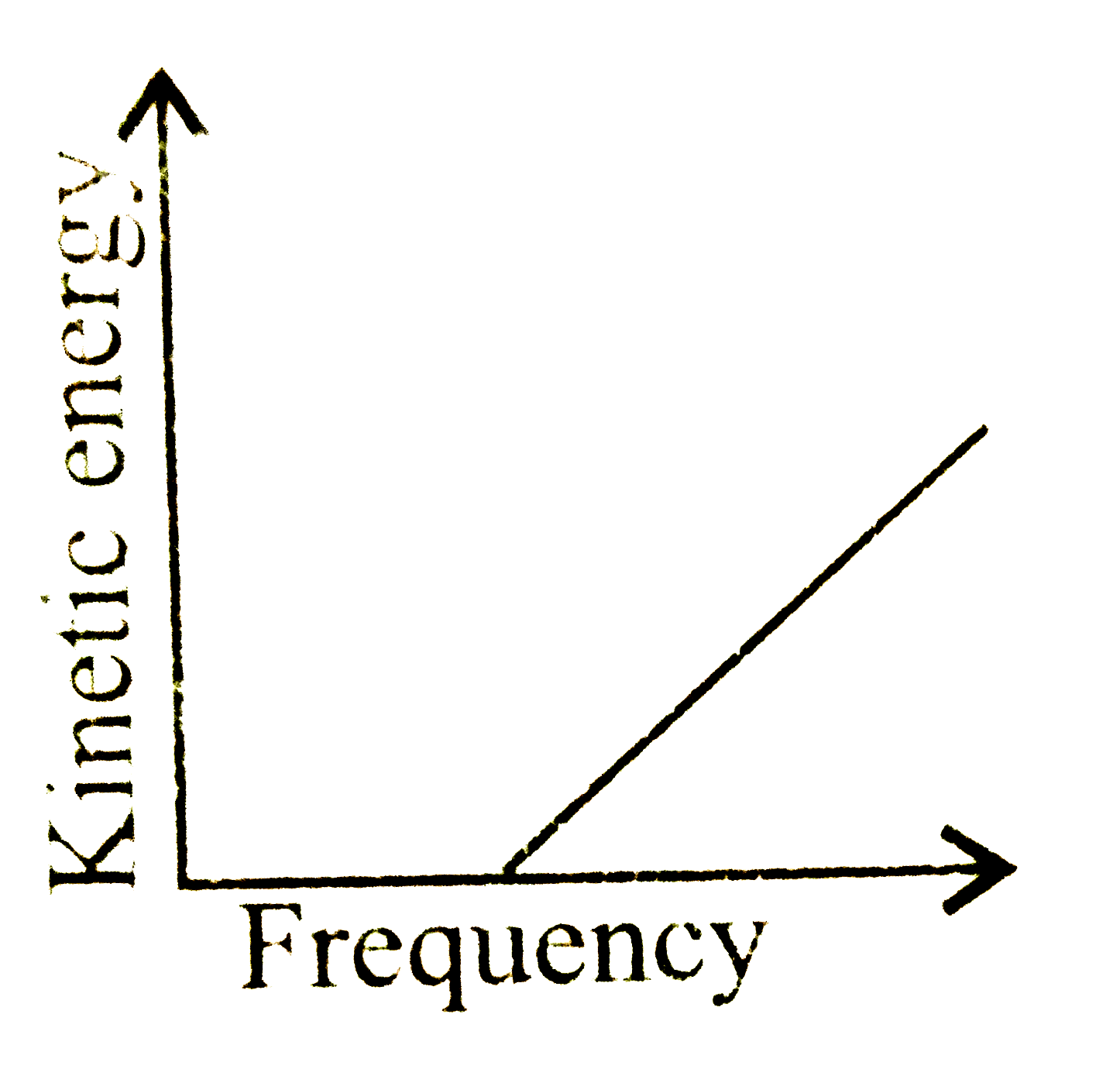According to Einstein's photoelectric equation (symbols have their usual meaning)
hv−ϕ=(KE)max
hv>(KE)max
ϕ=hv+(KE)max2
ϕ=(KE)max−hv2
The correct Answer is:A
To solve the question regarding Einstein's photoelectric equation, we will follow these steps:
Step 1: Understand the Photoelectric Effect
The photoelectric effect occurs when light (photons) hits a material and causes the ejection of electrons. The energy of the incoming photons must be greater than a certain threshold energy (Φ) for electrons to be emitted.
Step 2: Write Down Einstein's Photoelectric Equation
Einstein's photoelectric equation can be expressed as:
K.E.=hν−Φ
where:
- K.E. is the maximum kinetic energy of the emitted electrons,
- h is Planck's constant,
- ν is the frequency of the incident light,
- Φ is the threshold energy of the material.
Step 3: Analyze the Equation
From the equation, we can see that:
- If the energy of the photon (hν) is greater than the threshold energy (Φ), then electrons will be emitted.
- The excess energy (the difference between hν and Φ) is converted into the kinetic energy of the emitted electrons.
Step 4: Identify the Correct Explanation
The correct explanation of Einstein's photoelectric equation is that the maximum kinetic energy of the emitted electrons is equal to the energy of the incoming photon minus the threshold energy. This means that the energy left after overcoming the threshold is what gives the electrons their kinetic energy.
Conclusion
Thus, the correct interpretation of Einstein's photoelectric equation is:
K.E.=hν−Φ
The photoelectric effect occurs when light (photons) hits a material and causes the ejection of electrons. The energy of the incoming photons must be greater than a certain threshold energy (Φ) for electrons to be emitted.
Einstein's photoelectric equation can be expressed as:
K.E.=hν−Φ
where:
- K.E. is the maximum kinetic energy of the emitted electrons,
- h is Planck's constant,
- ν is the frequency of the incident light,
- Φ is the threshold energy of the material.
From the equation, we can see that:
- If the energy of the photon (hν) is greater than the threshold energy (Φ), then electrons will be emitted.
- The excess energy (the difference between hν and Φ) is converted into the kinetic energy of the emitted electrons.
The correct explanation of Einstein's photoelectric equation is that the maximum kinetic energy of the emitted electrons is equal to the energy of the incoming photon minus the threshold energy. This means that the energy left after overcoming the threshold is what gives the electrons their kinetic energy.
Thus, the correct interpretation of Einstein's photoelectric equation is:
K.E.=hν−Φ
Topper's Solved these Questions
Similar Questions
Knowledge Check
According to Einstein's photoelectric equation , the graph between the kinetic energy of photoelectrons ejected and the frequency of incident radiation is
A B
B C
C D
D
According to Einstein's photoelectric equation, the plot of the maximum kinetic energy of the emitted photoelectrons from a metal versus frequency of the incident radiation gives a straight line whose slope
Adepends on the intensity of incident radiation.Bdepends on the nature of the metal and also on the intensity of incident radiation.Cis same for all metals and independent of the intensity of the incident radiation.Ddepends on the nature of the metal.
Select the incorrect relation. (Where symboles have their usual meanings):-
View SolutionAccording to Newton's 2nd law of motion correct equation is (where symbols have their usual meanings)
View SolutionThe average intensity of electromagnetic wave is (where symbols have their usual meanings)
View SolutionWhich of the following is true regarding dimagnetic substances (symbols have their usual meaning)
View SolutionWhich of the following is correct ? (symbols have their ususal meanings)
View SolutionWhich of the following is correct ? (symbols have their ususal meanings)
View Solution
